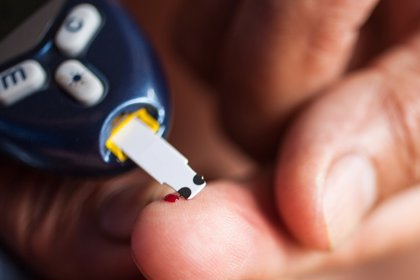Prediabetes is not the same in every person, in the early stages of type 2 diabetes, there are six clearly distinct subtypes, that differ in how they develop the disease, in the risk of diabetes, and in the development of secondary diseases.
The study
This was validated in a study conducted by the Research Institute for Diabetes and Metabolic Diseases (IDM) of the University of Tübingen Helmholtz Zentrum München, the Tübingen University Hospital and the German Diabetes Research Center (DZD).
The results have now been published in Nature Medicine. The new classification may help prevent the development of diabetes or the development of diabetes complications in the future through targeted prevention. Diabetes is a global pandemic. Since 1980, the number of people with diabetes has quadrupled worldwide. In Germany alone, 7 million people have diabetes. And the trend continues to increase. By 2040, the number of people with type 2 diabetes could add up to 12 million.
But type 2 diabetes doesn’t set in overnight. People often go through a longer preliminary stage of diabetes, in which blood glucose levels are already high, but people are not sick yet. “For people with prediabetes it hadn’t been possible until now to predict whether they would develop diabetes and be at risk for serious complications such as kidney failure; or if they would just have a harmless form with slightly higher blood glucose levels but no significant risk,” said professor Hans-Ulrich Häring, who started the study 25 years ago.
However, such a distinction is important for the targeted prevention of metabolic diseases, and therefore, for countering the diabetes pandemic. The Tübingen researchers have now made a major breakthrough. Using cluster analysis in people with prediabetes, they have discovered six different subtypes with different risks of diabetes. A differentiated classification of prediabetes and diabetes makes it possible to conduct early prevention and therapy at an individual level, of diabetes and its secondary diseases in a way adapted to the development of the disease.
Prediabetes: Six different groups identified
The research group led by Professor Häring and Professor Fritsche at Tübingen University Hospital has carried out detailed studies of the metabolism in people with prediabetes who are still considered healthy. The test individuals (n ??= 899) are from the Tübingen Family Study and the Tübingen Lifestyle Program study. They have repeatedly undergone intensive clinical, laboratory tests, MRI and genetic examinations in Tübingen over the past 25 years.
Based on key metabolic parameters such as blood glucose levels, liver fat, body fat distribution, blood lipid levels, and genetic risk, the researchers were able to identify six subtypes of prediabetes. “As in diabetes, there are also different types of diseases in the early stage of diabetes that differ in blood glucose levels”, said first author Professor Robert Wagner of the Helmholtz Zentrum München DZD Institute for Diabetes Research and Metabolic Diseases (IDM) at the University of Tübingen, summarizing the results of the study.
Three of these groups (groups 1, 2 and 4) are characterized by a low risk of diabetes. Study participants in groups 1 and 2 were healthy. Lean people are the main members of group 2. They have a particularly low risk of having complications. Group 4 is made up of overweight people, whose metabolism is still relatively healthy. The remaining three subtypes (groups 3, 5 and 6) are associated with an increased risk of diabetes and/or secondary diseases. People who belong to subtype 3 produce very little insulin and are at high risk of developing diabetes. People in group 5 have a manifest fatty liver and a very high risk of diabetes because their bodies are resistant to the hypoglycemic effect of insulin. In subtype 6, damage to the kidneys occurs even before diabetes is diagnosed. Here, mortality is also particularly high.
But can other cohorts also confirm the classification of six subtypes of prediabetes? To examine this, the researchers expanded the analysis to include nearly 7,000 subjects in the Whitehall II Cohort in London, and there they also identified the 6 subtypes of prediabetes.
More specific prevention measures
Researchers are already making more plans. “Next, in prospective studies, we’ll first seek to determine to what extent the new findings are applicable for the classification of individuals into risk groups,” said Professor Andreas Fritsche from the Tübingen University Hospital. If this is the case, people with a high-risk profile could be identified early on and receive specific treatment.
Date: January 10th, 2021
Source: https://www.sciencedaily.com
Prediabetes subtypes identified
Reference: Wagner R, Heni M, Tabák AG, et al. Pathophysiology-based subphenotyping of individuals at elevated risk for type 2 diabetes. Nat Med. 2021 Jan 4.
Nutrigenomics Institute is not responsible for the comments and opinions included in this article






